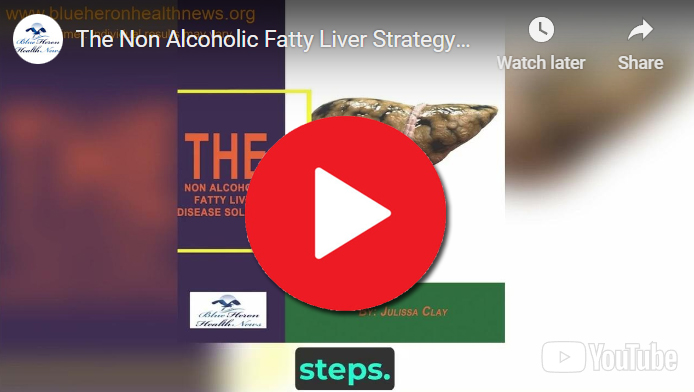
Fatty liver is a condition that is becoming increasingly common. Understanding the symptoms is crucial for early detection and prompt treatment. In this article, we will explore the different aspects of fatty liver and discuss the symptoms and signs that can help you recognize this condition.
Understanding Fatty Liver
Fatty liver, also known as hepatic steatosis, is a condition characterized by the accumulation of fat in the liver cells. This excess fat can interfere with the liver’s normal functioning, leading to inflammation and potential liver damage. Fatty liver can be classified into two types: alcoholic fatty liver disease (AFLD) and non-alcoholic fatty liver disease (NAFLD).
What is Fatty Liver?
Fatty liver occurs when there is an abnormal buildup of fat in the liver cells. This can happen due to excessive alcohol consumption or other factors such as obesity, type 2 diabetes, high cholesterol levels, or metabolic syndrome. When the liver’s ability to break down fat is impaired, it leads to the accumulation of fat in the liver.
When fat accumulates in the liver, it can lead to a range of symptoms such as fatigue, weakness, and abdominal pain. In more severe cases, fatty liver can progress to more serious conditions like liver fibrosis and cirrhosis, which can be life-threatening. It is essential to diagnose and manage fatty liver early to prevent further complications.
Causes and Risk Factors of Fatty Liver
Fatty liver can develop due to various causes and risk factors. Some common causes include excessive alcohol consumption, obesity, type 2 diabetes, high cholesterol levels, and insulin resistance. Other risk factors include rapid weight loss, certain medications, viral hepatitis, and genetic factors.
Genetic factors can play a significant role in the development of fatty liver. Certain genetic mutations can predispose individuals to accumulate fat in the liver more easily, even with relatively low levels of alcohol consumption or body weight. Understanding the genetic component of fatty liver can help tailor treatment approaches for individuals with a higher genetic risk.
Common Symptoms of Fatty Liver
While early stages of fatty liver may not cause noticeable symptoms, there are some common signs to look out for.
Fatty liver, also known as hepatic steatosis, is a condition characterized by the accumulation of fat in liver cells. It is often associated with obesity, insulin resistance, and high levels of triglycerides in the blood. As the liver becomes more fatty, it can lead to inflammation and scarring, a condition known as non-alcoholic steatohepatitis (NASH).
Physical Symptoms
Physical symptoms of fatty liver can include fatigue, abdominal discomfort, and pain in the upper right side of the abdomen. Some individuals may also experience an enlarged liver, which can be detected during a physical examination by a healthcare professional. The liver may feel tender to the touch and can be enlarged enough to be felt below the ribcage.
Non-Physical Symptoms
In addition to physical symptoms, fatty liver can also manifest in non-physical ways. Some individuals may experience mental fatigue, difficulty concentrating, or a general feeling of unwellness. These symptoms can vary from person to person and may be attributed to other underlying health conditions. It is important to note that fatty liver is often asymptomatic in its early stages, making it crucial to monitor liver health through regular check-ups and blood tests.
The Link Between Fatty Liver and Other Health Conditions
Fatty liver has been associated with an increased risk of developing other health conditions. Two significant conditions linked to fatty liver are diabetes and heart disease.
Understanding the intricate relationship between fatty liver and other health conditions is crucial for effective management and prevention strategies. In addition to diabetes and heart disease, fatty liver has also been connected to conditions such as kidney disease, certain types of cancer, and even neurological disorders. The impact of fatty liver extends beyond the liver itself, affecting various systems in the body.
Fatty Liver and Diabetes
Research suggests that there is a bidirectional relationship between fatty liver and type 2 diabetes. Individuals with fatty liver may have an increased risk of developing diabetes, while those with diabetes have a higher risk of developing fatty liver. Both conditions share common risk factors such as obesity, insulin resistance, and metabolic syndrome.
Furthermore, the presence of fatty liver can exacerbate the complications of diabetes, leading to a higher risk of cardiovascular events, kidney disease, and nerve damage. Managing both conditions concurrently is essential for preventing further health complications and improving overall well-being.
Fatty Liver and Heart Disease
Fatty liver has also been linked to an increased risk of heart disease. The excess fat in the liver can lead to elevated levels of bad cholesterol and triglycerides, which are known risk factors for heart disease. Additionally, inflammation caused by fatty liver can contribute to the development of atherosclerosis and other cardiovascular problems.
Individuals with fatty liver and heart disease face a complex interplay of risk factors that require a comprehensive approach to treatment. Lifestyle modifications such as a healthy diet, regular exercise, and weight management play a crucial role in managing both conditions and reducing the risk of complications. Close monitoring and collaboration between healthcare providers specializing in liver health and cardiology are essential for optimizing patient outcomes.
Diagnosis of Fatty Liver
Accurate diagnosis of fatty liver involves a combination of medical history, physical examination, and laboratory tests.
Fatty liver, also known as hepatic steatosis, is a common condition where there is an abnormal accumulation of fat in the liver cells. This can be caused by various factors such as obesity, high cholesterol, diabetes, and excessive alcohol consumption. Fatty liver can often be asymptomatic or present with nonspecific symptoms like fatigue and abdominal discomfort, making it essential to diagnose it accurately through comprehensive evaluation.
Medical History and Physical Examination
During a medical history assessment, your healthcare provider will ask about any risk factors, symptoms, and medical conditions. They will also perform a physical examination to evaluate your liver size and potential signs of liver damage. Understanding your medical history is crucial as certain medications, genetic factors, and lifestyle habits can contribute to the development of fatty liver.
Physical examination may reveal an enlarged liver, known as hepatomegaly, which can be a sign of liver inflammation or scarring. Additionally, your healthcare provider may look for specific physical features associated with advanced liver disease, such as jaundice or abdominal swelling.
Lab Tests and Imaging
Lab tests such as liver function tests, complete blood count, and imaging studies like ultrasound, MRI, or CT scan can help confirm the diagnosis of fatty liver, assess the severity, and rule out any other underlying liver conditions. Liver function tests measure the levels of enzymes and proteins in the blood that indicate liver health, while imaging studies provide detailed images of the liver to evaluate the extent of fat accumulation and any potential complications.
In some cases, a liver biopsy may be recommended to determine the degree of liver damage and inflammation. This invasive procedure involves removing a small sample of liver tissue for microscopic examination, offering valuable insights into the severity of fatty liver and guiding treatment decisions.
Treatment and Management of Fatty Liver
After being diagnosed with fatty liver, it is important to focus on treatment and management strategies to prevent further liver damage and improve liver health.
When it comes to the treatment and management of fatty liver, a multifaceted approach is often necessary to address the various factors contributing to the condition. In addition to lifestyle changes and medications, there are several other strategies that can be employed to support liver health.
Lifestyle Changes for Fatty Liver
A key aspect of managing fatty liver is making specific lifestyle changes. These changes may include maintaining a healthy weight, following a balanced diet low in saturated fats and refined sugars, engaging in regular exercise, limiting alcohol consumption, and managing any underlying health conditions such as diabetes or high cholesterol.
Furthermore, incorporating foods that are known to support liver health, such as leafy greens, cruciferous vegetables, and foods rich in antioxidants, can also be beneficial for individuals with fatty liver. These foods can help reduce inflammation, promote liver detoxification, and support overall liver function.
Medications and Surgical Options
In some cases, medication may be prescribed to treat underlying conditions contributing to fatty liver, such as diabetes or high cholesterol. However, these medications should be taken under the guidance of a healthcare professional. In more severe cases of fatty liver, surgical options such as liver transplantation may be necessary.
Additionally, alternative therapies such as acupuncture, herbal supplements, and mind-body practices like yoga and meditation have shown promise in supporting liver health and reducing inflammation in individuals with fatty liver. These complementary approaches can be used in conjunction with traditional medical treatments to provide a comprehensive approach to managing the condition.
In conclusion, recognizing the symptoms of fatty liver is essential for early detection and timely intervention. By understanding the symptoms and being aware of the risk factors associated with fatty liver, individuals can take proactive steps towards maintaining liver health and preventing potential complications.
See More on Video

The Non Alcoholic Fatty Liver Strategy™ By Julissa Clay The program provided in this eBook is very reasonable and realistic as it neither restricts your diet miserably so that you cannot stick to the changes in diet suggested in it nor wants you to do intense exercises for many hours every week.